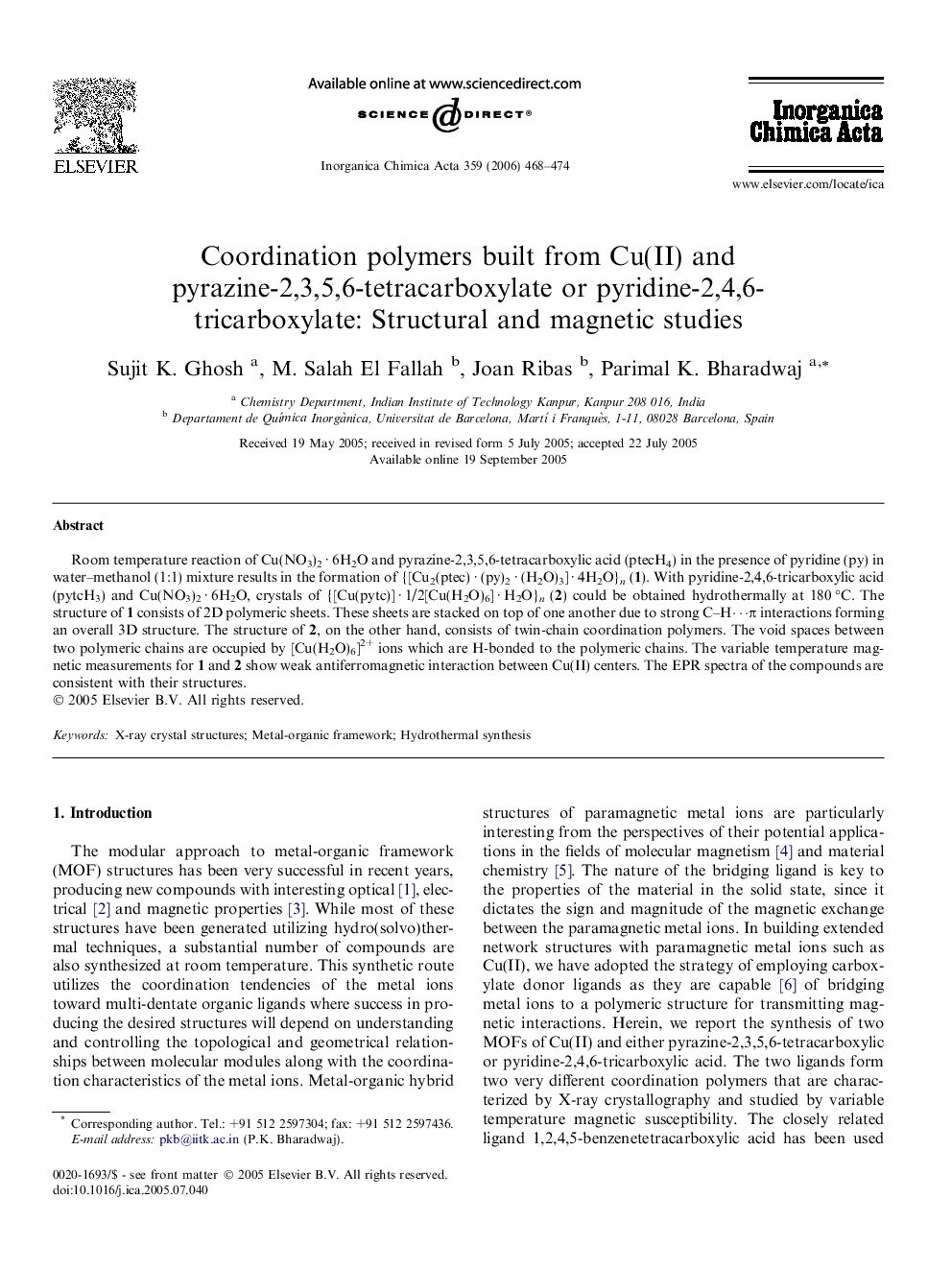| کد مقاله | کد نشریه | سال انتشار | مقاله انگلیسی | نسخه تمام متن |
|---|---|---|---|---|
| 1311760 | 975353 | 2006 | 7 صفحه PDF | دانلود رایگان |

Room temperature reaction of Cu(NO3)2 · 6H2O and pyrazine-2,3,5,6-tetracarboxylic acid (ptecH4) in the presence of pyridine (py) in water–methanol (1:1) mixture results in the formation of {[Cu2(ptec) · (py)2 · (H2O)3] · 4H2O}n (1). With pyridine-2,4,6-tricarboxylic acid (pytcH3) and Cu(NO3)2 · 6H2O, crystals of {[Cu(pytc)] · 1/2[Cu(H2O)6] · H2O}n (2) could be obtained hydrothermally at 180 °C. The structure of 1 consists of 2D polymeric sheets. These sheets are stacked on top of one another due to strong C–H⋯π interactions forming an overall 3D structure. The structure of 2, on the other hand, consists of twin-chain coordination polymers. The void spaces between two polymeric chains are occupied by [Cu(H2O)6]2+ ions which are H-bonded to the polymeric chains. The variable temperature magnetic measurements for 1 and 2 show weak antiferromagnetic interaction between Cu(II) centers. The EPR spectra of the compounds are consistent with their structures.
Reaction of Cu(NO3)2 · 6H2O and pyrazine-2,3,5,6-tetracarboxylic acid in the presence of pyridine at room temperature gives a 2D net which form a 3D structure via C–H⋯π interactions. With pyridine-2,4,6-tricarboxylic acid, the metal salt forms a 2D structure, which is assembled by Cu(H2O)6 to a 3D structure.Figure optionsDownload as PowerPoint slide
Journal: Inorganica Chimica Acta - Volume 359, Issue 2, 20 January 2006, Pages 468–474